#firstsignsofcancer
Text

Contact NCCS as we are an organization that would replace the words “cancer victim” with “cancer survivor,”
and bring about a different notion of the cancer experience.
#cancer#cancercare#careforcancersurvivors#survivorshipcareplan#cancerawareness#canceradvices#firstsignsofcancer
0 notes
Text
Contact NCCS as we are an organization that would replace the words “cancer victim” with “cancer survivor,”
and bring about a different notion of the cancer experience.
#cancer#cancercare#careforcancersurvivors#cancersymptoms#survivorshipcareplan#canceradvocacy#cancerawareness#firstsignsofcancer
0 notes
Text
About - NCCS - National Coalition for Cancer Survivorship
NCCS has worked with legislators and policymakers to represent cancer patients and survivors in efforts to improve their quality of care and quality of life after diagnosis. Our unique niche in the cancer advocacy landscape is promoting policy change to ensure quality cancer care. Our vision is to be an advocacy organization that reflects the needs of all cancer survivors to effect policy change at the national level.
#cancercare#cancersymptoms#careforcancersurvivors#survivorshipcareplan#canceradvocacy#cancer#cancerawareness#firstsignsofcancer#canceradvices
0 notes
Text
NCCS’ mission is to advocate for quality cancer care for all people touched by cancer. Founded by and for cancer survivors, NCCS created the widely accepted definition of survivorship and defines someone as a cancer survivor from the time of diagnosis and for the balance of life.
NCCS has worked with legislators and policy makers to represent cancer patients and survivors in efforts to improve their quality of care and quality of life after diagnosis. Our unique niche in the cancer advocacy landscape is promoting policy change to ensure quality cancer care. Our vision is to be an advocacy organization that reflects the needs of all cancer survivors to effect policy change at the national level.
NCCS represents the millions of Americans who share a common experience – the survivorship experience – living with, through and beyond a cancer diagnosis. That experience has value and can be a transforming, positive force. NCCS also knows that cancer survivors and those who care for them face many challenges.
To help meet those challenges, NCCS:
Advocates for changes in how the nation researches, regulates, finances and delivers quality cancer care.
Empowers cancer survivors through its publications and programs, which provide tools for self-advocacy.
Convenes other cancer organizations to address nationwide public policy issues affecting cancer survivors.
Link to: Our History
Our History
In 1986, the founders of NCCS set out to establish an organization that would replace the words “cancer victim” with “cancer survivor,” and bring about a different notion of the cancer experience.
#careforcancersurvivors#cancersymptoms#firstsignsofcancer#canceradvocacy#cancerpolicies#survivorshipcareplan#cancerawareness
0 notes
Text
Are cancer treatments improving?
Cancer is a complex and devastating disease that affects millions of people around the world. In recent years, there have been significant advancements in cancer treatments, including new drugs, therapies, and technologies. These advancements have improved the quality of life and survival rates for many cancer patients, but there is still much work to be done in the fight against cancer.

One of the most significant advancements in cancer treatment in recent years has been the development of targeted therapies. These drugs are designed to target specific molecules or pathways that are involved in the growth and spread of cancer cells. Targeted therapies have been developed for a variety of different cancers, including breast, lung, and prostate cancer. They have shown promising results in clinical trials, with some patients experiencing significant improvements in their cancer symptoms and survival rates.
Another important development in cancer treatment has been the use of immunotherapy. Immunotherapy is a type of treatment that uses the body's immune system to fight cancer. It works by stimulating the immune system to recognize and attack cancer cells. Immunotherapy has shown promising results in treating a variety of different cancers, including melanoma, lung cancer, and bladder cancer. In some cases, immunotherapy has been shown to be more effective than traditional chemotherapy.
Advancements in radiation therapy have also improved cancer treatments. Radiation therapy uses high-energy radiation to kill cancer cells. In recent years, new technologies have been developed that allow doctors to deliver radiation more precisely and effectively. For example, intensity-modulated radiation therapy (IMRT) and proton therapy are two types of radiation therapy that allow doctors to target tumors more precisely while minimizing damage to surrounding healthy tissue.
In addition to these new treatments, cancer research has also led to a better understanding of the disease and its causes. This has allowed doctors to develop more personalized treatment plans for individual patients. For example, genetic testing can help doctors identify specific mutations in cancer cells that may be targeted with certain drugs. This personalized approach to cancer treatment has been shown to be more effective than a one-size-fits-all approach.
Despite these advancements, there are still challenges in the fight against cancer. One major challenge is the development of resistance to cancer treatments. Cancer cells can mutate and adapt to treatments, making them less effective over time. This is a major reason why many cancer patients require multiple rounds of treatment.
Another challenge is the high cost of cancer treatments. Many new cancer drugs and therapies are expensive, making them inaccessible to some patients. This is a particular challenge for patients in low- and middle-income countries, where access to healthcare is limited.
Finally, there is still much work to be done in the field of cancer research. While there have been significant advancements in recent years, there is still much that is not understood about the disease. Researchers continue to study the genetic and molecular factors that contribute to cancer, and new treatments and technologies are being developed all the time.
In conclusion, cancer treatments have improved significantly in recent years, thanks to new drugs, therapies, and technologies. Targeted therapies, immunotherapy, and advances in radiation therapy have all contributed to improved survival rates and quality of life for cancer patients. Personalized approaches to cancer treatment have also shown promise. However, there are still challenges in the fight against cancer, including the development of resistance to treatments and the high cost of new therapies. Ongoing research is needed to continue making progress in the fight against cancer.
NCCS Telehealth Project
PROJECT BACKGROUND
The National Coalition for Cancer Survivorship (NCCS) Telehealth Project was developed to gain insights from participants regarding telehealth experience in oncology.
A diverse group of 29 participants, which included cancer patients or survivors, were recruited to participate in six focus groups, conducted in May and June 2020. A total of 31 providers also participated by providing feedback in August 2020 regarding areas of agreement or disagreement with patient responses.
PATIENT FOCUS GROUP FEEDBACK
Focus group participants reported a variety of pros and cons to telehealth visits, some of which are contradictory and reflect divergence of viewpoints. These pros and cons can help plan for post-pandemic telehealth services.
To know more visit:
https://canceradvocacy.org/resources/telehealth/
0 notes
Text
Can one sunburn cause skin cancer?
Sunburn is a common skin injury caused by overexposure to the sun's ultraviolet (UV) radiation. While sunburn itself is not a direct cause of skin cancer, it is a risk factor for the disease. Prolonged exposure to UV radiation can damage skin cells and increase the risk of skin cancer over time. Therefore, it is important to take steps to prevent sunburn and protect your skin from UV radiation.

Quality cancer care is essential for the prevention, diagnosis, and treatment of skin cancer. Skin cancer is the most common type of cancer in the United States, and it can be deadly if not detected and treated early. Skin cancer treatment may include surgery, radiation therapy, chemotherapy, and immunotherapy, depending on the type and stage of the cancer.
Cancer survivor stories can provide inspiration and hope for those who are facing a cancer diagnosis, including skin cancer. These stories show that it is possible to overcome the challenges of cancer and live a fulfilling life after a cancer diagnosis.
Sunburn is a type of skin damage caused by UV radiation. When the skin is exposed to too much UV radiation, the skin cells become damaged and inflamed, leading to redness, pain, and blistering. While a single sunburn may not directly cause skin cancer, it is a risk factor for the disease. Repeated exposure to UV radiation over time can cause DNA damage in skin cells, which can lead to the development of skin cancer.
The most common types of skin cancer are basal cell carcinoma, squamous cell carcinoma, and melanoma. Basal cell carcinoma and squamous cell carcinoma are the most common types of skin cancer and are typically less aggressive than melanoma. However, they can still cause serious health problems if left untreated. Melanoma is a less common but more aggressive type of skin cancer that can spread to other parts of the body.
Preventing sunburn and protecting your skin from UV radiation is essential for reducing the risk of skin cancer. This can be done by using sunscreen, wearing protective clothing, and avoiding sun exposure during peak UV radiation hours. Sunscreen should be applied to all exposed skin, including the face, neck, arms, and legs, and should be reapplied every two hours or after swimming or sweating.
In addition to preventing sunburn, it is important to be aware of the signs and symptoms of skin cancer. These may include changes in the size, shape, or color of moles or other skin lesions, as well as the development of new growths on the skin. It is important to have any suspicious moles or growths evaluated by a dermatologist, who can perform a biopsy to determine whether they are cancerous.
If skin cancer is diagnosed, quality cancer care is essential for the best possible outcome. Treatment may include surgery to remove the cancerous growth, radiation therapy to destroy cancer cells, chemotherapy to kill cancer cells, or immunotherapy to boost the body's immune system to fight cancer. The type and stage of the cancer will determine the most appropriate treatment plan.
Cancer survivor stories can provide inspiration and hope for those who are facing a skin cancer diagnosis. These stories show that it is possible to overcome the challenges of cancer and live a fulfilling life after a cancer diagnosis. Skin cancer survivors may also provide guidance and support for those who are newly diagnosed, and they may share tips for preventing and managing sunburn and protecting the skin from UV radiation.
In conclusion, while a single sunburn may not directly cause skin cancer, it is a risk factor for the disease. Preventing sunburn and protecting your skin from UV radiation is essential for reducing the risk of skin cancer. If skin cancer is diagnosed, quality cancer care is essential for the best possible outcome. Cancer survivor stories can provide inspiration and hope for those who are facing a skin cancer diagnosis.
Our Mission
NCCS represents the millions of Americans who share a common experience – the survivorship experience – living with, through and beyond a cancer diagnosis. That experience has value and can be a transforming, positive force. NCCS also knows that cancer survivors and those who care for them face many challenges.
To know more visit:
About - NCCS - National Coalition for Cancer
0 notes
Text
Who are the first cancer patients in the world?
Cancer has been present throughout human history, and the first recorded cases of the disease are difficult to identify. However, cancer has been documented in ancient medical texts, and throughout history, many people have been affected by the disease. Despite the challenges of cancer, many people have survived the disease throughout history, and their stories provide inspiration and hope for cancer patients and their families.
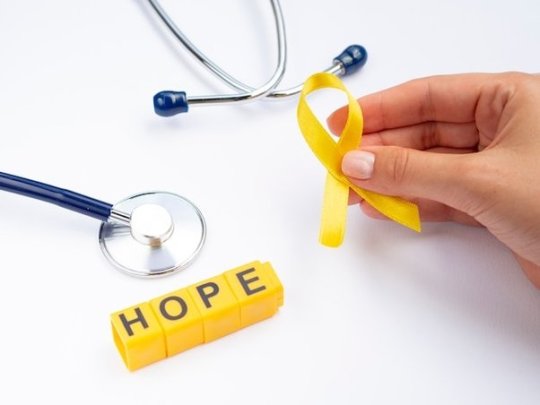
Quality cancer care is essential for cancer patients, and early detection is a critical component of effective cancer treatment. Regular cancer screenings and self-examination can help to identify cancer in its early stages, when treatment is most effective. Once a cancer diagnosis is made, a multidisciplinary team of healthcare professionals will work together to create a treatment plan that is tailored to the needs of the individual patient.
Cancer survivor stories are an important source of inspiration and hope for cancer patients and their families. These stories show that it is possible to overcome the challenges of cancer and live a fulfilling life after a cancer diagnosis. Cancer survivor stories are also an important tool for raising awareness about the disease and promoting the importance of cancer research and funding.
One of the earliest recorded cases of cancer is found in ancient Egypt, where medical texts describe tumors and growths on the breast and other parts of the body. In ancient Greece, the physician Hippocrates wrote extensively about cancer and its symptoms. He believed that cancer was caused by an imbalance of bodily fluids, and he recommended a range of treatments, including surgery, to remove tumors. The Greek physician Galen also wrote about cancer, and he described several different types of the disease, including breast cancer and cancer of the uterus.
Over the centuries, cancer has been a difficult disease to treat, and many people who were diagnosed with cancer did not survive. It was not until the 19th and 20th centuries that significant advances were made in the treatment of cancer, thanks to the discovery of anesthesia, the development of surgical techniques, and the introduction of radiation therapy and chemotherapy.
Today, there are many effective treatments for cancer, including surgery, radiation therapy, chemotherapy, immunotherapy, and targeted therapy. These treatments have helped to improve survival rates for many types of cancer, and ongoing research is focused on developing new and more effective treatments.
Cancer survivor stories are a testament to the strength and resilience of cancer patients. These stories provide hope and inspiration for those who are facing a cancer diagnosis, and they offer guidance and support for families and loved ones. Cancer survivor stories also help to raise awareness about the disease and the importance of early detection, and they promote the need for ongoing research and funding to find new and more effective treatments for cancer.
In addition to cancer survivor stories, it is also important to recognize the impact that cancer has on the lives of cancer victims. For many people, cancer can be a devastating disease that affects every aspect of their lives. Cancer victims may experience physical and emotional pain, financial hardship, and social isolation, and it is essential to provide support and resources to help them cope with the challenges of the disease.
Quality cancer care is essential for cancer patients, and it includes a range of services and support to help patients manage the physical and emotional effects of cancer. This may include pain management, nutrition counseling, counseling and support services, and complementary therapies such as acupuncture or massage. It is also important to provide support for caregivers and family members, who play a critical role in the care of cancer patients.
In conclusion, while the first cancer patients in the world are difficult to identify, cancer has been present throughout human history. Many people have survived the disease throughout history, and their stories provide inspiration and hope for cancer patients and their families. Quality cancer care is essential for cancer patients, and it includes a range of services and support to help patients manage the physical and emotional effects of cancer. Cancer survivor stories and support
To know more about NCCS Visit here :
Home - NCCS - National Coalition for Cancer SurvivorshipOur mission is to advocate for quality cancer care for all people touched by cancer.https://canceradvocacy.org/
0 notes
Text
How does chemotherapy work?
Chemotherapy is a type of cancer treatment that uses drugs to kill cancer cells. The drugs target the fast-growing and dividing cancer cells, while leaving the normal, healthy cells unharmed. Chemotherapy can be used as a standalone treatment or in combination with other treatments, such as surgery or radiation therapy, to achieve the best results.
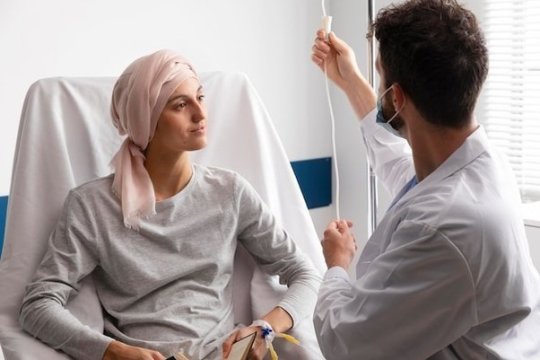
The process of chemotherapy usually involves administering the drugs through an intravenous (IV) line or orally, depending on the type of chemotherapy. The length and frequency of treatment will vary based on the type and stage of cancer, as well as the individual patient's overall health. Chemotherapy is usually given in cycles, with each cycle consisting of a certain number of days of treatment followed by a period of rest to allow the body to recover.
The primary goal of chemotherapy is to reduce the size of a cancerous tumor, making it easier to remove surgically or making it more responsive to radiation therapy. Chemotherapy can also be used to shrink or slow the growth of cancer that has spread to other parts of the body, or to eliminate any remaining cancer cells after surgery. Additionally, chemotherapy can help to prevent cancer from coming back by killing any remaining cancer cells that may have been left behind after surgery.
Chemotherapy can cause side effects, some of which can be severe. Common side effects include fatigue, nausea, vomiting, hair loss, and decreased white blood cell counts, which can make patients more susceptible to infections. However, these side effects are usually temporary and will go away after treatment is complete.
The National Coalition for Cancer Survivorship (NCCS) is a valuable resource for patients undergoing chemotherapy. NCCS is a nonprofit organization dedicated to improving the quality of life for cancer survivors and their families. They provide information and support to help patients and their families navigate the cancer journey, including information about chemotherapy and its side effects.
In addition to the support and resources provided by NCCS, patients undergoing chemotherapy can also benefit from the support of other cancer survivors. Hearing the cancer survivor stories of others who have been through similar experiences can provide comfort and hope, as well as practical tips for coping with the physical and emotional challenges of chemotherapy.
For patients to receive the full benefits of chemotherapy, they need to receive high-quality cancer care from experienced healthcare professionals. This includes close monitoring of their condition and prompt attention to any side effects or other issues that may arise during treatment. Patients should also be informed of all their treatment options, including any clinical trials that may be available to them, so that they can make informed decisions about their care.
For those who have been diagnosed with cancer, the journey can be challenging and overwhelming. However, with the support of organizations like NCCS, high-quality cancer care, and a community of cancer survivors, patients and their families can find hope and resilience in the face of this disease.
In conclusion, chemotherapy is an important tool in the fight against cancer. By targeting the fast-growing cancer cells, chemotherapy can help to shrink tumors, slow the growth of cancer that has spread, and prevent cancer from coming back. Patients undergoing chemotherapy can benefit from the support and resources provided by organizations like NCCS, as well as from the support of other cancer survivors and high-quality cancer care. With the right support, cancer victims can become cancer survivors and work towards a better quality of life.
To know more about NCCS Visit here :
Home - NCCS - National Coalition for Cancer SurvivorshipNCCS represents the millions of Americans who share a common experience – the survivorship experience – living with, through and beyond a cancer diagnosis.
0 notes
Text
What is chemotherapy?
Overview
Chemotherapy is a drug treatment that uses powerful chemicals to kill fast-growing cells in your body.
Chemotherapy is most often used to cancer treat, since cancer cells grow and multiply much more quickly than most cells in the body.
Many different chemotherapy drugs are available. Chemotherapy drugs can be used alone or in combination to treat a wide variety of cancers.
Though chemotherapy is an effective way to treat many types of cancer, chemotherapy treatment also carries a risk of side effects. Some chemotherapy side effects are mild and treatable, while others can cause serious complications.
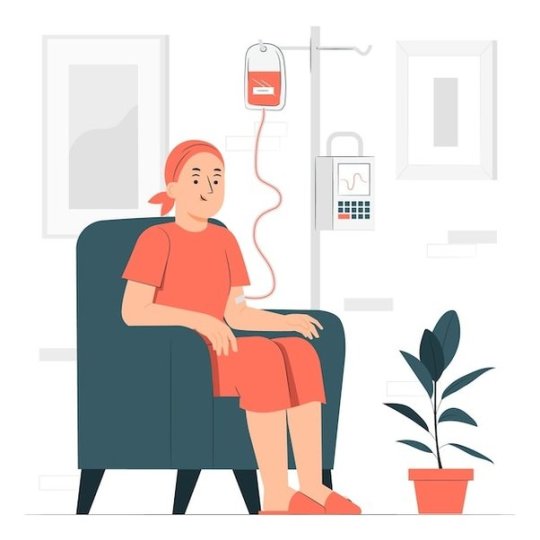
Why it's done
Chemotherapy is used to kill cancer cells in people with cancer.
There are a variety of settings in which chemotherapy may be used in people with cancer:
To cure the cancer without other treatments. Chemotherapy can be used as the primary or sole treatment for cancer.
After other treatments, to kill hidden cancer cells. Chemotherapy can be used after other treatments, such as surgery, to kill any cancer cells that might remain in the body. Doctors call this adjuvant therapy.
To prepare you for other treatments. Chemotherapy can be used to shrink a tumor so that other treatments, such as radiation and surgery, are possible. Doctors call this neoadjuvant therapy.
To ease signs and symptoms. Chemotherapy may help relieve signs and symptoms of cancer by killing some of the cancer cells. Doctors call this palliative chemotherapy.
Risks
Side effects of chemotherapy drugs can be significant. Each drug has different side effects, and not every drug causes every side effect. Ask your doctor about the side effects of the particular drugs you'll receive.
How chemotherapy drugs are given
Chemotherapy drugs can be given in different ways, including:
Chemotherapy infusions. Chemotherapy is most often given as an infusion into a vein (intravenously). The drugs can be given by inserting a tube with a needle into a vein in your arm or into a device in a vein in your chest.
Chemotherapy pills. Some chemotherapy drugs can be taken in pill or capsule form.
Chemotherapy shots. Chemotherapy drugs can be injected with a needle, just as you would receive a shot.
Chemotherapy creams. Creams or gels containing chemotherapy drugs can be applied to the skin to treat certain types of skin cancer.
Chemotherapy drugs used to treat one area of the body. Chemotherapy drugs can be given directly to one area of the body. For instance, chemotherapy drugs can be given directly in the abdomen (intraperitoneal chemotherapy), chest cavity (intrapleural chemotherapy) or central nervous system (intrathecal chemotherapy). Chemotherapy can also be given through the urethra into the bladder (intravesical chemotherapy).
Chemotherapy given directly to the cancer. Chemotherapy can be given directly to the cancer or, after surgery, where the cancer once was. As an example, thin disk-shaped wafers containing chemotherapy drugs can be placed near a tumor during surgery. The wafers break down over time, releasing chemotherapy drugs. Chemotherapy drugs may also be injected into a vein or artery that directly feeds a tumor.
How often you receive chemotherapy treatments
Your doctor determines how often you'll receive chemotherapy treatments based on what drugs you'll receive, the characteristics of your cancer and how well your body recovers after each treatment. Chemotherapy treatment schedules vary. Chemotherapy treatment can be continuous, or it may alternate between periods of treatment and periods of rest to let you recover.
Where you receive chemotherapy treatments
Where you'll receive your chemotherapy treatments depends on your situation. Chemotherapy treatments can be given:
In an outpatient chemotherapy unit
In a doctor's office
In the hospital
At home, such as when taking chemotherapy pills
Results
You'll meet with your cancer doctor (oncologist) regularly during chemotherapy treatment. Your oncologist will ask about any side effects you're experiencing, since many can be controlled.
Depending on your situation, you may also undergo scans and other tests to monitor your cancer during chemotherapy treatment. These tests can give your doctor an idea of how your cancer is responding to treatment, and your treatment may be adjusted accordingly.
Too know more visit:
About - NCCS - National Coalition for Cancer Survivorship
1 note
·
View note
Text
How can I verify cancer information I read on the net
First of all you need to find the right resource for your requirements.
Not sure about your resource? Visit NCCS - National Coalition for Cancer Survivorship

In 1986, the founders of NCCS set out to establish an organization that would replace the words “cancer victim” with “cancer survivor,” and bring about a different notion of the cancer experience. The founders envisioned an organization that would deal with the full spectrum of survivorship issues related to living with, through and beyond a cancer diagnosis.
Founded in Albuquerque, New Mexico, NCCS’s diverse leadership included some of the most recognized experts on employment and disability law, health care consumerism and psychosocial and behavioral research. Consequently, NCCS quickly developed a reputation as the “go to” organization for how to deal with the physiological, psychosocial, economic and spiritual issues that accompany a cancer diagnosis. The informed patient was — and still is — at the heart of NCCS’s mission. NCCS began its work by contributing to the literature and evidence base for quality cancer care. NCCS’s first publication dealt with doctor/patient communications, followed by publications on survivors’ rights and how to be an informed and knowledgeable health care consumer.
NCCS’s definition of a survivor, from the time of diagnosis and for the balance of life is now the norm for the cancer community and beyond. NCCS has expanded its definition of survivor to include family, friends, and caregivers.
In 1992, NCCS relocated its offices to Washington, D.C. to be closer to the organizations and institutions that play a role in educating government agencies and policymakers about the need for quality cancer care throughout the survivorship continuum. Since that time, we have remained in the Washington, DC area and continued to advocate for the nearly 17 million cancer survivors living in the United States.
To know more in details, visit:
Our History - NCCS - National Coalition for Cancer
0 notes
Text
What are some online ovarian cancer support platform available
n 1986, the founders of NCCS set out to establish an organization that would replace the words “cancer victim” with “cancer survivor,” and bring about a different notion of the cancer experience. The founders envisioned an organization that would deal with the full spectrum of survivorship issues related to living with, through and beyond a cancer diagnosis.

Founded in Albuquerque, New Mexico, NCCS’s diverse leadership included some of the most recognized experts on employment and disability law, health care consumerism and psychosocial and behavioral research. Consequently, NCCS quickly developed a reputation as the “go to” organization for how to deal with the physiological, psychosocial, economic and spiritual issues that accompany a cancer diagnosis. The informed patient was — and still is — at the heart of NCCS’s mission. NCCS began its work by contributing to the literature and evidence base for quality cancer care. NCCS’s first publication dealt with doctor/patient communications, followed by publications on survivors’ rights and how to be an informed and knowledgeable health care consumer.
NCCS’s definition of a survivor, from the time of diagnosis and for the balance of life is now the norm for the cancer community and beyond. NCCS has expanded its definition of survivor to include family, friends, and caregivers.
In 1992, NCCS relocated its offices to Washington, D.C. to be closer to the organizations and institutions that play a role in educating government agencies and policymakers about the need for quality cancer care throughout the survivorship continuum. Since that time, we have remained in the Washington, DC area and continued to advocate for the nearly 17 million cancer survivors living in the United States.
Cancer Survival Toolbox®
The program contains a set of basic skills and special topics. Each scenario is inspired by true stories of real cancer patients. The Cancer Survival Toolbox is for people at any point in their care. It is used by patients, health care professionals, and by individuals or in support group settings.
Produced through a unique collaboration between the National Coalition for Cancer Survivorship (NCCS), the Oncology Nursing Society (ONS), the Association of Oncology Social Workers (AOSW), and the National Association of Social Workers (NASW), with a grant from Genentech, Inc., the Toolbox encourages people with cancer and their caregivers to take a more active role in their care.
https://youtu.be/EdKs_Ev2Omo
Listen Online
Listed below are the separate programs which make up the Cancer Survival Toolbox. Each page has a player where you can listen to the full program. The full Cancer Survival Toolbox can also be downloaded for FREE in the NCCS store.
Source: https://canceradvocacy.org/
0 notes
Text
What is the most common type of cancer diagnosis?
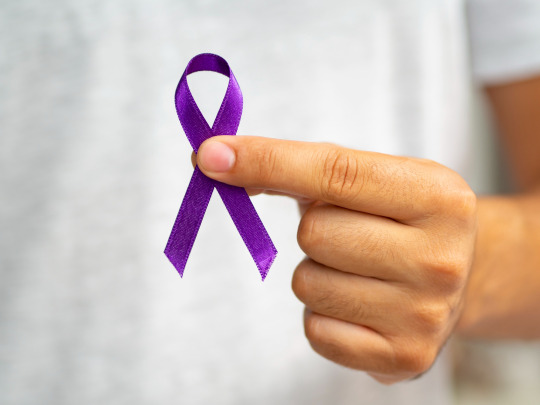
1 – Skin cancer
Skin cancer is divided into the non-melanoma and melanoma categories. Non-melanoma (basal cell and squamous cell skin cancer) is the more common form with over 2,000,000 cases expected to be diagnosed in the country. Most of these forms of cancer are curable. Melanoma, on the other hand, is the more serious type of skin cancer. It affects approximately five percent of people diagnosed with skin cancer, but is attributed to over 75 percent of all skin cancer deaths.
2 – Lung cancer
Recently, 226,160 new cases of lung cancer were expected to be diagnosed in the U.S. Lung cancer accounts for about 28 percent of all cancer deaths. An estimated 160,340 deaths were expected to occur from lung cancer. The 5-year survival rate for all stages of lung cancer combined is just 16 percent. However, for cases detected when the disease is still localized, that number is 53 percent. Cigarette smoking is the most important risk factor for lung cancer.
3 – Prostate cancer
It’s estimated that 1 in 6 men in the U.S. will be diagnosed with prostate cancer in their lifetime. It’s the most commonly diagnosed cancer among men (excluding skin cancer) and the second most common cause of death. Approximately 241,740 new cases were diagnosed with an estimated 28,170 men expected to die from the disease in the year. PSA screenings and digital rectal exams (DRE) can help for early detection.
4 – Breast cancer
According to the American Cancer Society, 226,870 new cases of invasive breast cancer were expected to occur in the U.S. Excluding skin cancer, breast cancer is the most frequently diagnosed cancer among women. Breast cancer ranks second as a cause of cancer death in women (after lung cancer).
5 – Colorectal cancer
An estimated 103,170 new cases of colon and 40,290 cases of rectal cancer were expected to occur. Colorectal cancer doesn’t discriminate — it’s the third most common cancer in both men and women. Colorectal cancer was expected to account for nine percent of all cancer deaths.
6 – Kidney (renal) cancer
The American Cancer Society estimated 64,770 new cases of kidney (renal) cancer with 13,570 deaths from this disease. Tobacco is a strong risk factor for kidney cancer, as well as obesity and hypertension.
7 – Bladder cancer
Blood in the urine is a common symptom of urinary bladder cancer. An estimated 73,510 new cases of this cancer were expect. With all stages of bladder cancer combined, the five-year relative survival rate is 80 percent. Surgery (alone or in conjunction with other treatments) is used in 90 percent of cases.
8 – Thyroid cancer
Three out of four cases of thyroid cancer occur in women. Perhaps surprisingly, it is the fastest-increasing cancer in both men and women. A lump in the neck is the most common symptom of thyroid cancer. An estimated 56,460 new cases of thyroid cancer were expected in 2012 in the U.S., as well as 1,780 deaths from the disease.
NCCS has worked with legislators and policy makers to represent cancer patients and survivors in efforts to improve their quality of care and quality of life after diagnosis. Our unique niche in the cancer advocacy landscape is promoting policy change to ensure quality cancer care. Our vision is to be an advocacy organization that reflects the needs of all cancer survivors to effect policy change at the national level.
To know more visit: https://canceradvocacy.org/get-involved/what-is-advocacy/
0 notes
Text
What gives hope to cancer survivors?
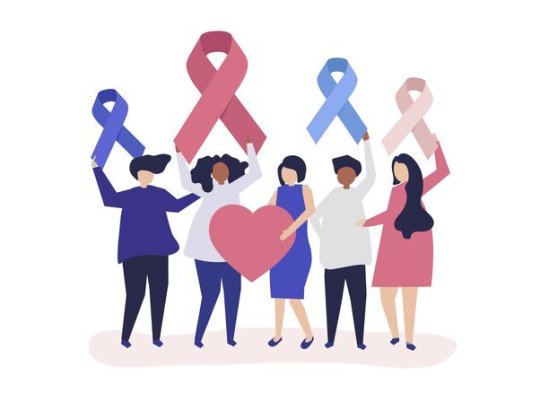
There is no right or wrong path to finding hope. Hope comes easy for some. Others may not be sure how to hold onto that feeling during some experiences. Talk with your loved ones and health care team if you feel hopeless, depressed, anxious or overwhelmed. Here are some strategies for you to try: To know more visit ; https://lindabrown1812.wixsite.com/cancersurvivaltoolbo/post/what-gives-hope-to-cancer-survivors
0 notes
Text
Is cancer increasing in the U.S.?

People often look to the past and think about people they knew who were diagnosed with cancer, such as their grandmother, uncle, aunt. And they have a negative image of what that actually means, However, today it really doesn’t mean the same thing. To read full blog visit: https://medium.com/@lindabrown1812/is-cancer-increasing-in-the-u-s-fcccf3f927a14
0 notes
Text
Is cancer increasing in the U.S.?

No one doubts that the US spends more than any other country on health care. Whether this higher spending produces commensurate health benefits, however, is far from certain.
We find that survival after diagnosis rose more quickly in the U.S. than the E.U
Ask any breast cancer survivor and they can likely tell you the date of their last day of treatment just as easily as they can tell you their birthday.
And most survivors especially mark the five-year anniversary of when they were diagnosed with cancer. That has traditionally been seen as a benchmark for when you could say, “My chances of having that cancer return is no longer likely.”
But oncology experts like Linda A. Jacobs, PhD, CRNP, a Nurse Practitioner and Director for the Development of Cancer Survivorship Programs, have long been wary of standing behind that benchmark.
The good news is that the risk of recurrence—the term for when a cancer returns—decreases each year for most cancers, explains Jacobs.
But there’s a caveat: “It’s different for every disease and different for every patient. People need to know that yes, it’s a great thing to reach that five-year mark, and most cancer survivors can be cautiously optimistic at that point. However, it doesn’t mean that the recommended follow-up and surveillance for anything should end,” she says.
Here's what you should do once you've reached the five-year survival mark.
Stay Vigilant
Jacobs says that once you’ve been diagnosed with cancer, it’s vital that you follow the surveillance schedule set up by your oncology team. Survivors must have the scans and lab work they’re instructed to get, and keep their appointments.
“That’s probably the most important thing people can do for themselves besides living a healthy lifestyle,” she says.
And while that may seem like a no-brainer, compliance can be a big issue.
“People tend to feel better. Consequently, some survivors don’t want to be constantly reminded of their disease,” Jacobs explains. “And they don’t want to be constantly going to appointments. However, it’s really important that they do so.”
Continue to Get All Screenings
Another important piece of surveillance that’s critical for you as a cancer survivor is having the recommended screening tests for other cancers, not just the one you were diagnosed with.
“In other words, if you’re a 45-year-old breast cancer survivor, five years from now—when you’re 50 years old and you survived breast cancer—you should be getting your colon cancer screening, which is recommended at age 50,” advises Jacobs.
As a cancer survivor, you may be at a slightly increased risk of developing a different type of cancer.
And even if you never get another cancer, you may experience long-term or late-occurring effects from the cancer treatment you received even five or more years after treatment has ended.
These late effects—which can occur as a result of the treatment received including radiation, chemotherapy, surgery or prescription drugs—can include problems with the thyroid gland, heart or lungs, as well as cognitive issues and emotional difficulties.
“For example, a breast cancer survivor whose left breast was radiated as part of her cancer treatment may be at increased risk for cardiac issues, since her heart was in the field of radiation,” explains Jacobs.
Target Late Effects
It’s estimated that about two-thirds of cancer survivors will experience one or more late effects of treatment.
As a leading research institute, we have a series of ongoing and recently completed studies that aim to better identify the most common issues for different cancers, including breast cancer—one, five or even 30 years down the road.
Currently part of a research protocol, a symptom questionnaire is sent to breast cancer survivors using this mechanism. The symptoms reported by the patient are then transmitted to the patient’s medical record to be addressed by the oncology team at the next follow-up visit.
Although the risks associated with having cancer or being treated for one may sound like bleak news, Jacobs stresses that surviving cancer has a much rosier picture than it used to.
“People often look to the past and think about people they knew who were diagnosed with cancer, such as their grandmother, uncle, aunt. And they have a negative image of what that actually means,” she says. “However, today it really doesn’t mean the same thing. We have very different treatments, better treatments today. We manage symptoms far better than we did in the past.
Our Mission
NCCS’ mission is to advocate for quality cancer care for all people touched by cancer. Founded by and for cancer survivors, NCCS created the widely accepted definition of survivorship and defines someone as a cancer survivor from the time of diagnosis and for the balance of life.
NCCS has worked with legislators and policy makers to represent cancer patients and survivors in efforts to improve their quality of care and quality of life after diagnosis. Our unique niche in the cancer advocacy landscape is promoting policy change to ensure quality cancer care. Our vision is to be an advocacy organization that reflects the needs of all cancer survivors to effect policy change at the national level.
NCCS represents the millions of Americans who share a common experience – the survivorship experience – living with, through and beyond a cancer diagnosis. That experience has value and can be a transforming, positive force. NCCS also knows that cancer survivors and those who care for them face many challenges.
To know more visit: https://canceradvocacy.org/about/our-history/
0 notes
Text
Where is the biggest opportunity in Telehealth?

Big data analytics can process data collected from telehealth modalities, including both objective and subjective data, along with historical data to enable risk prediction and management. Moreover, federal agencies, public payers, and large commercial insurers have expanded telehealth access amid the pandemic. To know more visit: https://lindabrown1812.wixsite.com/cancersurvivaltoolbo/post/where-is-the-biggest-opportunity-in-telehealth
0 notes